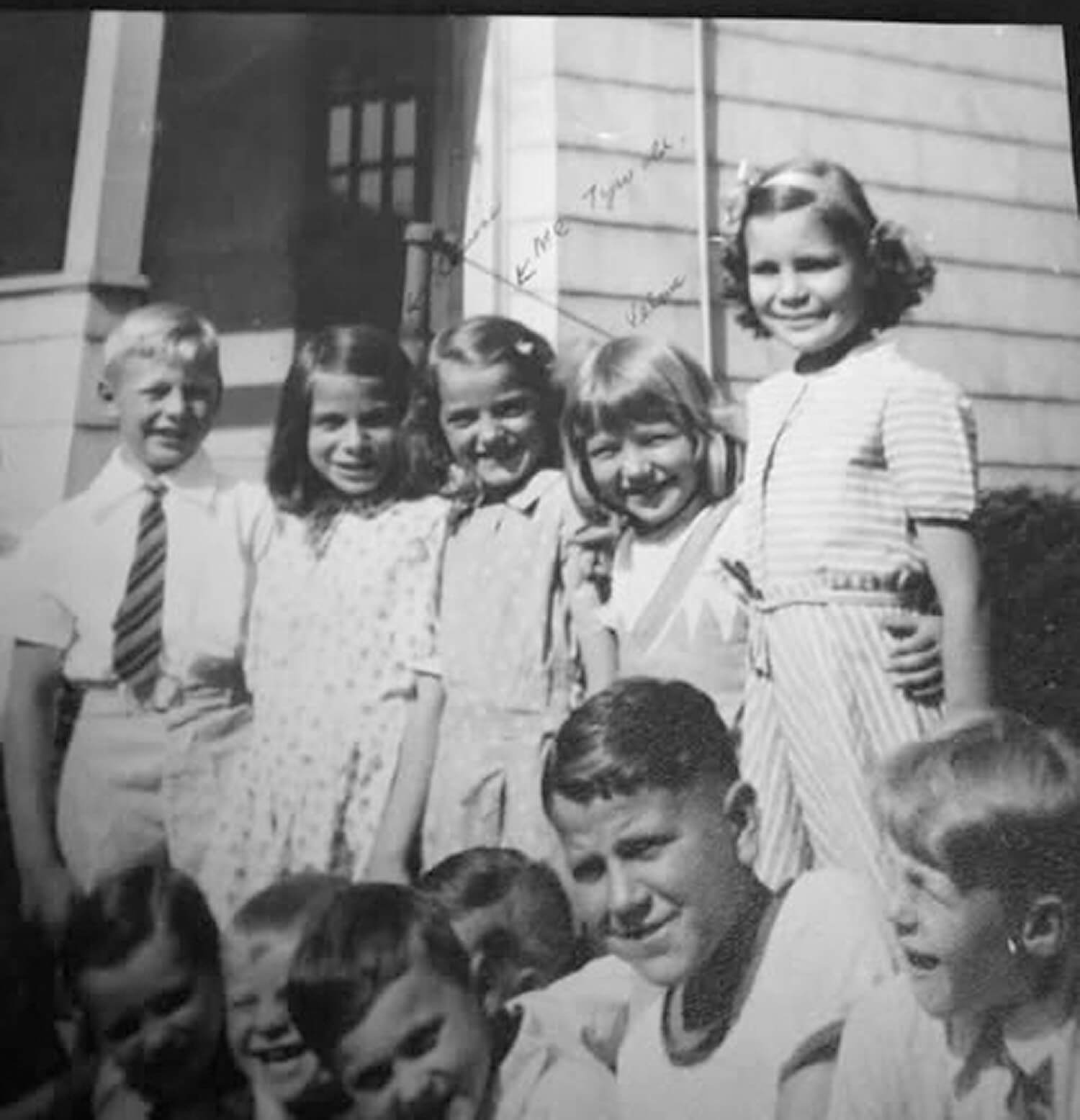
A look back
by Louise Vallone
I can’t believe I am 90. I can’t believe how fast time goes by. I often find myself reflecting on the life I lived back in the 1930s. Growing up in upstate New York as part of a Czechoslovakian/Hungarian immigrant family, I’ve seen a world transformed. Life was tough, but it was also rich in ways that are hard to describe to someone who didn’t live it.
Our neighborhood was like a little piece of Slovakia transplanted to New York. Families lived close to one another, and most of us came from the same homeland. We spoke Slovak at home and at church, and every Sunday, we’d gather after Mass to sing and to share news, food, and laughter.
My mother baked koláče (sweet rolls with poppy seed or walnut filling) and made hearty dishes like halupe and halušky or hungarian goulash. Every family had its own special recipes, but no matter where you went—whether it was the Italians making their pasta or the Poles down the street with their pierogi—you felt the same sense of connection. We may have had different customs and foods, but our stories of hard work, sacrifice, and hope for a better future were the same.
Our kitchen was always busy, especially on Sundays when my mother would cook up a feast for whoever might stop by. We didn’t have fancy appliances; our stove burned wood, and our icebox held only what we needed for a day or two. Everything was done by hand—mixing dough, chopping vegetables, and even grinding meat. Today, people have food processors, refrigerators that talk to them, and ovens that cook a meal while they’re away. I marvel at the convenience, but back then, cooking was an act of love and togetherness. My mother would hum Slovak songs while kneading bread, and my sisters and I would help chop or stir. It was simple, but it was joyful.
My father was Kilmer’s horse trainer and a painter by trade. My mother ran the house and raised us kids. Everyone had a role to play. As children, we weren’t just expected to go to school—we also helped with chores like gathering firewood, cleaning and tending to the garden. The neighbors were like an extended family, always willing to lend a hand. If someone was sick, food would appear at their door. If someone needed a barn built, the men in the neighborhood would show up with tools in hand.
That sense of community is something I don’t see much anymore. Today, people live next door for years without knowing one another. Back then, we didn’t just live near each other—we lived with each other.
What we ate came from what we grew, traded, or could afford. My mother killed and plucked chickens herself and made a simple chicken and rice dish from it. She also canned vegetables from our garden. We didn’t have the luxury of grocery stores stocked year-round with exotic fruits and packaged snacks. But our food was wholesome, and we rarely wasted anything. Today, I see aisles of processed foods and fast meals, but I also see people missing out on the connection that comes from growing, preparing, and sharing food together. The Slovak traditions of family meals and celebration around the table are what I cherish most from those days.
What strikes me most is how, despite cultural differences, so many families in that era lived similar lives. Whether it was Slovaks, Italians, Poles, or Irish immigrants, we all shared the struggles of making ends meet, the pride in our traditions, and the hope that our hard work would create a better life for the next generation. That’s a thread that ties us all together, even today.
Life in the 1930s wasn’t easy, but it was full of meaning. We didn’t have much, but we had each other—our families, our traditions, and our communities. Modern life is full of conveniences I could never have dreamed of, but sometimes I wonder if we’ve lost something along the way.
As I sit in my quiet home, I think about how my story isn’t just mine—it’s the story of so many families who built this country with their hands and hearts. I hope my great-grandchildren remember the value of family, tradition, and the strength that comes from working together. That’s the legacy I carry with me, and I hope they carry it, too.
